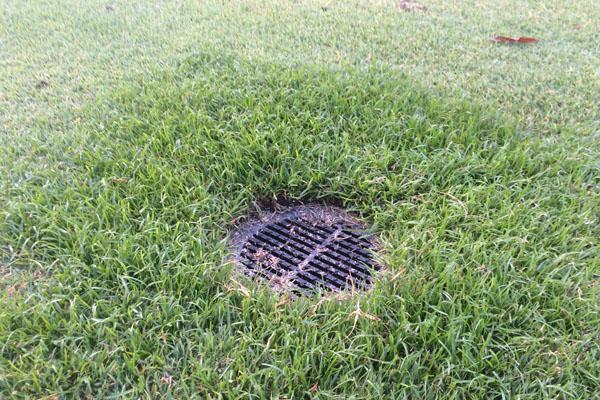It's that time of year again. No, we're not talking about the run-up to rapidly approaching The Masters. We're talking about the lead-in to the summer weed season, which is coming just as quickly.
 Each spring, as turf breaks free from its dormant slumber, other things are awakening underground.
Each spring, as turf breaks free from its dormant slumber, other things are awakening underground.The positive attributes of yellow nutsedge begin - and end - with its vibrant, lime-green color. After that, it's all downhill for this invasive and hard-to-control plant.
There are two types of nutsedge that are problematic for turf managers in the United States - yellow and purple.
Nutsedge germinates usually in April or May, depending on geographic location and climate. Both yellow and purple varieties grow from tubers, or nutlets, that grow at the end of rhizomes, and a single plant is capable of producing hundreds of new tubers in a single growing season. According to research at Penn State, each tuber has numerous buds, each of which can produce several new plants.
Yellow nutsedge is at home in wet conditions, so eliminating overwatering and improving drainage in trouble spots can help, but it can survive just fine in drier conditions, too. After germination, the plant thrives throughout summer as it works to outcompete cool-season turf. It is prolific at reproduction and spreads rapidly to other areas defined by poorly draining soils.
Sedges are tolerant to mowing, and although they often look like many grass species, they can be easy to spot, according to information from Purdue University, not only due to their bright, lime-green color, but because they grow faster than the turf they invade.
By mid-summer, plants begin to add new tubers that set the stage for recurring problems in the future, according to data published by North Carolina State University.
While it typically is considered a summer problem, yellow nutsedge is a cold-tolerant pest and often hangs on until the first frost, according to Penn State data. Frost will kill the lush, leafy plant above ground, but does nothing to thwart the tubers below the surface.
Preventive and post-emergent control options, according to university research include mesotrione or a combination of sulfentrazone and prodiamine. Post-emergent control recommendations include halosulfuron and flazasulfuron.
Purple nutsedge is a different animal. Unlike yellow nutsedge, which is native to the U.S., purple nutsedge is an invasive species that made its way over from India. Confined mostly to the southwestern and southeastern parts of the U.S., it thrives in warm-season turf. As is the case with other sedges, it thrives in wet soils, but isn't limited to damp conditions.
It is unique in that tubers often are connected underground by a matrix of rhizomes, making it much more difficult to control, as per University of Arizona research.
The same products that work to control yellow nutsedge also are effective against purple nutsedge, according to North Carolina State University data.

